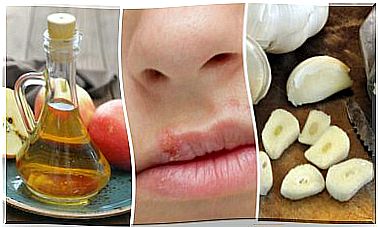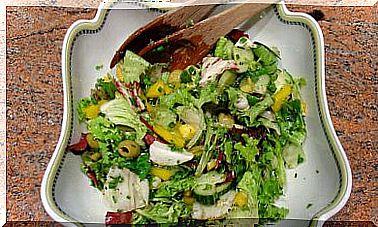Big MAC: Carbohydrates Accessible To The Microbiota
The big MAC concept, beyond the famous hamburger, refers to carbohydrates that are accessible to the microbiota. In fact, they have been postulated as the main food of the same and different investigations have linked them to greater microbial diversity and better general health.
Keep in mind that taking care of the intestinal flora has a positive impact on the body’s function, since it helps the metabolism of nutrients and the immune system.
What are the big MACs?
Big MAC or carbohydrates accessible to the microbiota are indigestible polysaccharides from which the microbiota nourishes itself. Most of them meet the definition of soluble fiber.
The term “fiber” refers to that part of carbohydrates that, being edible, resists the processes of digestion and absorption. Thus, it is able to reach the large intestine intact where its microbiota will have the opportunity to ferment it.
Unfortunately, not all fiber is fermentable, that is, not all of it is accessible to the microbiota. This property, that of fermentability, is only attributable to that fiber that is soluble, that is, it has the ability to retain water, swell and form viscous gels in the intestine. An example would be pectins, which have been shown to positively alter the intestinal flora.

In contrast, insoluble fiber cannot be fermented or can be fermented very slowly. However, despite lacking such property, it is equally beneficial for other reasons. Its main characteristic lies in its ability to clean the intestine by detaching waste from its walls.
Why should big MACs be fermentable?
The fermentability of carbohydrates is important because it is the only way for the healthy microbiota to access them and thus be able to nourish themselves. Without it, beneficial microorganisms could not survive and multiply, and pathogens would grow stronger.
Furthermore, such fermentation is a fundamental process for the microbiota to manufacture substances such as short-chain fatty acids, which exert positive nutritional, trophic, metabolic, immune and anti-inflammatory effects.
What are the benefits of carbohydrates accessible to the microbiota?
The benefits of big MACs are all attributable to a healthy microbiota, highlighting:
- Intestinal benefits. Healthy microorganisms are capable of improving and stabilizing the integrity of the intestinal barrier, as well as improving transit through the intestine.
- Anti-inflammatory effects. The microbiota is capable of producing substances with great anti-inflammatory power, butyric acid being especially important. This is demonstrated by a study published in Advances in Nutrition. It should be remembered that chronic cellular inflammation is the first step towards Alzheimer’s, cancer, diabetes mellitus, cardiovascular diseases, premature aging and obesity, among others.
- Trophic effects. The fermentation of Big MAC is essential for the microbiota to provide us with nutrients such as short-chain fatty acids and vitamins such as K, B12, biotin and folic acid.
- Immunomodulatory properties. A healthy microbiota is capable of stimulating the intestinal immune response by enhancing the action of some elements of the body’s natural defense, such as: IgA antibodies, macrophages, Natural Killer cells, T cells, interferon and interleukins. In addition, it synthesizes components with antimicrobial action.
- Neuropsychiatric properties. A healthy gut microbiota and low-permeable gut are key to good mental health.

What foods are rich in big MACs?
Within the big MAC we find: resistant starch, beta-glucans, fructooligosaccharides and inulin, mucilage and pectin. Next, we tell you what are the foods that contain them:
- Resistant starch. It is found primarily in cooked and cooled rice, potatoes, and oats. In addition, it is very present in: sweet potato, chestnuts, peas, lentils, plantain, little ripe banana, buckwheat and yuka.
- Betaglycans. They are present in algae, oats and mushrooms and, in addition to their impact on the microbiota, they stand out for their incredible ability to modulate the immune system. There is evidence that these fibers are capable of promoting good health.
- Fructooligosaccharides and inulin. The foods richest in this type of fiber are: garlic, onion, asparagus and bananas.
- Mucilages. They are found mainly in agar-agar, Plantago ovata and chia, tomato and flax seeds.
- Pectin. The foods richest in pectin are: blueberries, currants, lemons, tangerines, apples, quinces, oranges and grapes.
Include fiber in the diet to improve health
In short, to maintain a healthy microbiota, and thus enjoy a state of complete well-being, we must not only have an adequate amount and diversity of beneficial microorganisms, but we must take care of them. In this, the big MACs are specialists.









